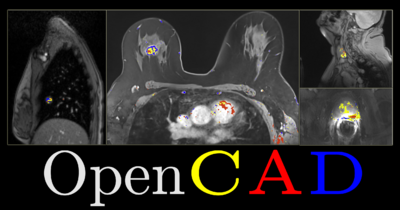Difference between revisions of "Documentation/Nightly/Extensions/OpenCAD"
From Slicer Wiki
| Line 26: | Line 26: | ||
{{documentation/{{documentation/version}}/extension-section|Modules}} | {{documentation/{{documentation/version}}/extension-section|Modules}} | ||
*[[Documentation/{{documentation/version}}/Modules/SegmentCAD|SegmentCAD: Tumor Segmentation from DCE-MRI]] | *[[Documentation/{{documentation/version}}/Modules/SegmentCAD|SegmentCAD: Tumor Segmentation from DCE-MRI]] | ||
| − | *[[Documentation/{{documentation/version}}/Modules/HeterogeneityCAD|HeterogeneityCAD: Analyze Heterogeneity of Tumor Images and their Parameter Maps using various metrics | + | *[[Documentation/{{documentation/version}}/Modules/HeterogeneityCAD|HeterogeneityCAD: Analyze Heterogeneity of Tumor Images and their Parameter Maps using various metrics)]] |
<!-- ---------------------------- --> | <!-- ---------------------------- --> | ||
{{documentation/{{documentation/version}}/extension-section|Extension Description}} | {{documentation/{{documentation/version}}/extension-section|Extension Description}} | ||
| − | *The SegmentCAD module is designed to segment tumors from DCE-MRI datasets which include a pre-contrast image and post-contrast images at different time points. | + | *The SegmentCAD module is designed to segment tumors from DCE-MRI datasets which include a pre-contrast image and post-contrast images at different time points. |
| − | *The HeterogeneityCAD module is | + | **SegmentCAD uses blackbox methods to calculate the wash-in and wash-out slopes from the time-intensity curves. |
| + | **The segmentation output is a Label Map with red, yellow, and blue colors respectively identifying washout (Type III), plateau (Type II), and persistent (Type I) voxels. | ||
| + | *The HeterogeneityCAD module is an extensible, image feature extraction toolbox primarily to quantify the heterogeneity of tumor images and their label maps. Metrics have been implemented from a variety of feature classes including: | ||
| + | **First-Order/Histogram statistics | ||
| + | **Morphology/Shape measures and Geometrical (4D Extrusion) measures | ||
| + | **Renyi/Fractal dimensions | ||
| + | **Texture features computed from Gray-Level Co-occurrence Matrices (GLCM) and from Gray-Level Run Length matrices (GLRL) | ||
| + | |||
<!-- ---------------------------- | <!-- ---------------------------- | ||
Revision as of 16:55, 24 July 2014
Home < Documentation < Nightly < Extensions < OpenCAD
|
For the latest Slicer documentation, visit the read-the-docs. |
Introduction and Acknowledgements
|
This work is supported by NA-MIC, NCIGT, and the Slicer Community. | |||||||
This project is supported by P41 RR019703/RR/NCRR NIH HHS/United States, P01 CA067165/CA/NCI NIH HHS/United States and P41 EB015898/EB/NIBIB NIH HHS/United States |
Modules
- SegmentCAD: Tumor Segmentation from DCE-MRI
- HeterogeneityCAD: Analyze Heterogeneity of Tumor Images and their Parameter Maps using various metrics)
Extension Description
- The SegmentCAD module is designed to segment tumors from DCE-MRI datasets which include a pre-contrast image and post-contrast images at different time points.
- SegmentCAD uses blackbox methods to calculate the wash-in and wash-out slopes from the time-intensity curves.
- The segmentation output is a Label Map with red, yellow, and blue colors respectively identifying washout (Type III), plateau (Type II), and persistent (Type I) voxels.
- The HeterogeneityCAD module is an extensible, image feature extraction toolbox primarily to quantify the heterogeneity of tumor images and their label maps. Metrics have been implemented from a variety of feature classes including:
- First-Order/Histogram statistics
- Morphology/Shape measures and Geometrical (4D Extrusion) measures
- Renyi/Fractal dimensions
- Texture features computed from Gray-Level Co-occurrence Matrices (GLCM) and from Gray-Level Run Length matrices (GLRL)
Tutorials
- SegmentCAD
Data sets
- SegmentCAD
Quick Instructions for Use
- SegmentCAD (Click link for detailed description)
- Select the pre-contrast volume
- Select the first post-contrast volume
- Select the second post-contrast volume
- Select the third post-contrast volume
- Select the fourth post-contrast volume
- Create or select a label map volume node to represent the output of the segmentation
- Click "Apply OpenCAD Segmentation"
Similar Modules
N/A
References
N/A
Information for Developers
Source code: https://github.com/vnarayan13/Slicer-OpenCAD



